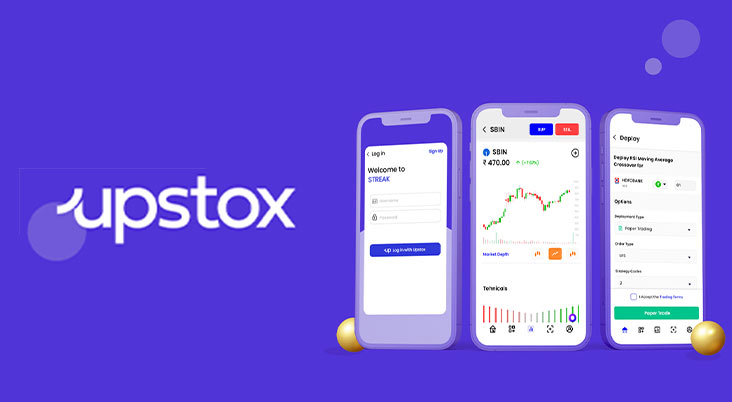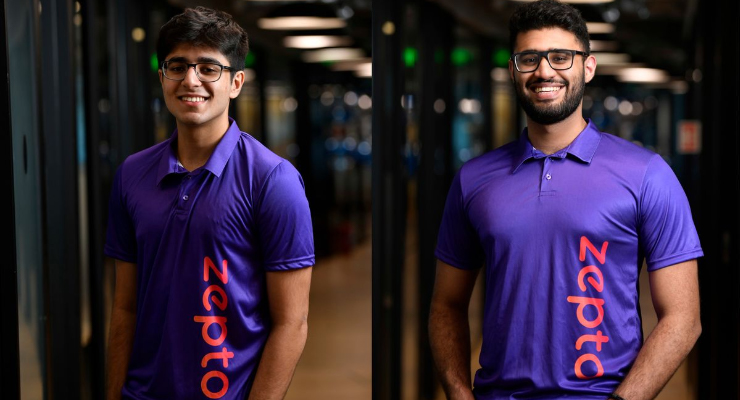
Zepto is a grocery shopping app that delivers groceries in 10 minutes. Customers get to choose from thousands of popular items including fresh farm vegetables and fruits, groceries, dairy & more at the best prices from Zepto & a Zeptonian Rider will be at the door in about 10 minutes. Zepto is growing at a 200% rise in price in 11 months, with 60% repeat customers.
In April 2021, two friends, Kaivalya Vohra [CTO] and Aadit Palicha [CEO], both 19, formed Zepto. They were both admitted to Stanford University and were scheduled to acquire a Bachelor’s Degree in Computer Science, but instead opted to construct Zepto. Earlier in September 2020, they started “Kirana Mart” which was a supermart delivery startup similar to Big Basket and Grofers. However, until January 2021, it was well known as Zepto.
Zepto’s Shareholdings –
Zepto is backed by nine investors. Major shareholders of Zepto are Kaivalya Vohra (18.8%), Aadit Palicha (22.5%), Nexus Ventures (20.7%), eBooks Private Investors (10.4%), Y Combinator (5.1%), Rocket Internet (5.7%) and others(16.8%). The most recent investors are Contrary and Glade Brook Capital Partners. The firm is currently valued at $900 million, and it has raised a total of $200 million.
Zepto’s funding –

The company has recently raised $200 million at a current valuation of $900 million in its Series D round led by Y Combinator Continuity with Kaser Permanente along with other existing investors like Nexus Venture Partners, Glade Brook Capital and Lachy Room. Although, it was looking forward to a valuation of $1 billion to attain the unicorn status it didn’t come through. Earlier in December 2021, it had raised $100 mn led by YC Continuity at a valuation of $570 million.
It plans to utilise the fresh funds to grow operations, recruit more employees, improve goods, and develop its recently established ‘Zepto Cafe’ service. To serve snackable goods in 10 minutes, the Mumbai-based firm has partnered with establishments such as Blue Tokai Coffee, Chaayos, Gurukripa snacks, and Sassy Teaspoon. Tea, pastries, samosas, and coffee are among the goodies being offered.
Acquiring fresh talent –
The talent acquisition department was one of the primary things that went correctly for the firm. They were successful in attracting numerous high-level executives from Amazon. Uber, Pharmeasy, Flipkart, and Dream 11 have all expressed interest in joining their group.
Zepto’s 10 Minute Delivery –
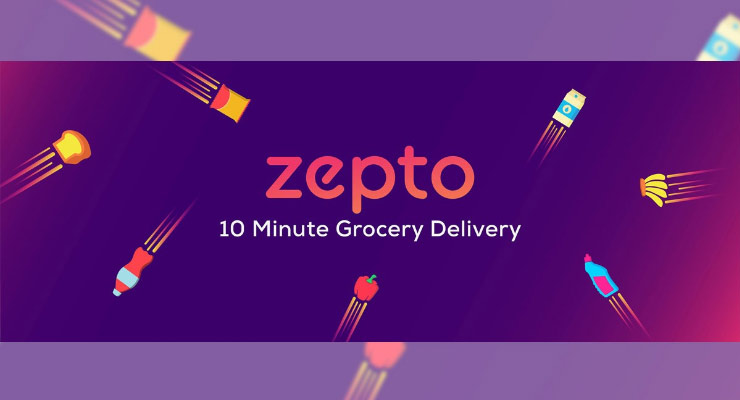
Zepto introduced its notion of 10-minute delivery. The entire sport and situation were altered. Customers were agitated, but they couldn’t do much because of the loss of many possibilities in the market. People’s impatience was exploited by Zepto with its 10min delivery value proposition.
How does Zepto manage to deliver in 10 minutes?
This takes us closer to Zepto’s second method, “The dark shop model.” Dark shops are basically mini-warehouses with the capacity to service all clients within a 3-kilometre radius. Zepto employs a one-of-a-kind product called Locus. This solution tracks the customer’s geostatistical data, traffic dynamics, and how long it will take for the last mile delivery. As a result, it chose whether or not to build a new Dark Store in that area.
Locus is an AI application that leverages the Google API and presents all relevant data on the Zepto dashboard. As a result, it is not the efficiency of the delivery guys that is important, but rather the technology.
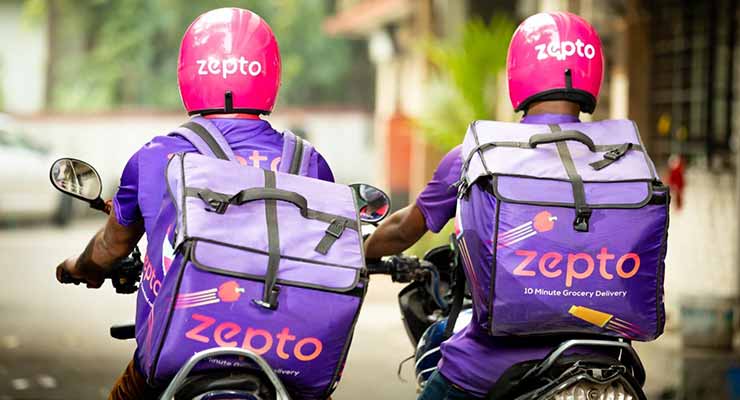
The PPB formula is another notable Zepto approach, and it is responsible for the Dark Store model’s success.
1) Picking- It is a quick process in all Zepto stores. All employees in their dark stores have tablets, and when an order is placed, it goes to a central hub, from there it goes to the dark store, and from there it’s given to employees because everything is reflected on their tablets, that what items are in this order and which item is placed on which place, which shelf.
2) Packing – All the items are collected and then packed quickly.
3) Bagging – As soon as the delivery agent receives the order, the agent must exit the warehouse. Zepto requires a 60-second advance time in all three procedures of choosing, packaging, and bagging.
Zepto’s Dark Store Business Model –
Dark storefronts may appear sinister, but they were one of the many brilliant ideas that have helped some retail enterprises survive the plague. Dark shops are distribution centres that are not available to the public. These mini-warehouses handle orders fast and accurately, providing customers with tools and alternatives such as purchasing items online, same-day delivery, or in-store pickup.
According to the founders, the secret of the dark store concept is how they choose, pack, and ship products in under 60 seconds. The last mile, on the other hand, is similar to any other delivery scheme.
Dark stores are designed for quick deliveries and cannot handle high sales volumes. However, Zepto refused to accept this model’s flaws. They offer over a thousand things on display, including fresh vegetables, milk, meat, household supplies, and much more at the greatest prices. Moreover, their AI-powered tools ensure a smooth transition from picking, packing, and delivering.

Existing market participants such as Swiggy and Bigbasket could simply replicate all of these characteristics. So, how will Zepto compete with these massive corporations?
The answer to this is concealed in Zepto’s massive tactic known as “Hyper Focus.”
Swiggy, Big Basket, and Grofers all compete on pricing, which is something they all have in common. Customers want to place their orders where they may obtain the best discounts. But Zepto is obsessed with speed. Zepto’s client acquisition approach differs from those of these organisations.
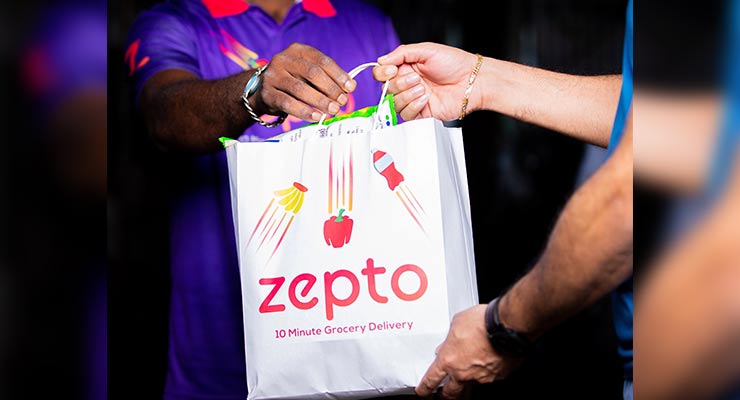
Challenges for Zepto –
1) Retainers – Acquiring and retaining customers becomes more difficult for Zepto as a result of the bulk of these organisations already having significant retainers.
2) Price Power Maintenance – Quick deliveries are very expensive, especially if delivery fees are not charged. Running low prices and speed at the same time is much more difficult, and to do so requires a lot of cash flow and funding.
3) Income economies -The third thread is “Economies of scale.” Because the daily earnings of Swiggy, Big Basket, and Grofers are likely to be quite substantial, they will have additional cash compared to Zepto, and they have also been provided investment.
Zepto’s Future Goals –
In the future, Zepto intends to grow the number of Dark Stores in order to boost the number of orders. Once they start retaining clients, they want to start collecting convenience fees. Though Zepto may face severe dangers in the near future owing to fierce rivalry, it’s incredible how two 19-year-old lads leap and shake the roots of massive corporations such as Big Basket or Blinkit, among others. It might also announce its public listing incoming 2-3 years.
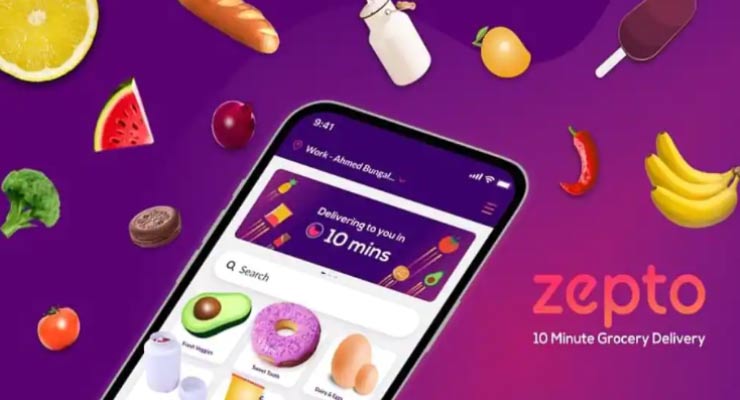
Conclusion –
Today’s consumer is more concerned with the cost supplied by using the brand rather than the logo itself. Because the consumer is loyal to the price supplied by the brand rather than the logo itself, continually improving the pricing proposition is the only option left for firms to survive in the market.
Something is generally left unexplored in every marketplace, area, and enterprise. If we look at this circumstance, we can see that there was an untapped demand of people’s impatience by making use of what Zepto has established across the entire organisation.






